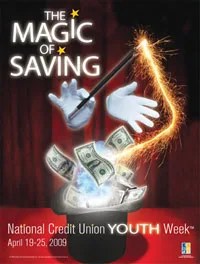My father tells a story about me as a small child. One day we went for a walk in our neighborhood and he’d left his wallet at home.
“I want an ice cream,” I said, spotting the ice cream truck.
“Sorry, kid,” said my father. “I don’t have any money on me.”
I pointed at the person at the front of the line, who was pocketing her change. “But those people are getting money,” I announced.
Nowadays my son is about the same age I was then and has a similarly fanciful grasp of where money comes from. What is worrying is that, if he is like the majority of American kids, he’ll grow up with a level of financial awareness not far advanced from the magical money-dispensing ice cream truck.
Two-thirds of students who took a personal finance survey in 2002 received a failing score (the survey was administered by the Jump$tart Coalition, a body that works with schools to support financial education). A Consumer Reports survey of 12-year-olds found that 28 percent did not know that credit cards are a form of borrowing, 40 percent did not know that banks charge interest on loans, and 34 percent didn’t know that you can’t tell how good a product is by how much it is advertised.
April is Financial Literacy Month, with activities and events nationwide aimed at improving the state of children’s awareness. Credit unions will run special events to encourage young people to open up savings accounts, and on April 21, Teach Children to Save Day, bankers will go into local schools to give classes on money management.
For students at a school in Queens the lesson will be a memorable one. Last year, Citi brought Mets player Aaron Heilman along when it visited the William Hallett Elementary School in Queens (P.S. 76) to teach a class on how interest makes money grow, how to budget, and how to distinguish needs from wants. Afterwards, Citi invited students and teachers to Shea Stadium to see a Mets game. Citi plans to repeat the event at another school this year.
However, according to Laura Levine, executive director of Jump$tart, it is lessons learned at home that may have the most powerful influence on children’s future spending habits. “Sometimes parents are intimidated when we suggest that they should ‘teach’ their kids about money management,” says Levine. “Especially when they might not be fully informed themselves or might have made mistakes of their own. I tell parents to admit you don’t have all the answers and, maybe, seek them together. Don’t focus on the past, but vow to do better starting now and set the example for your kids to follow.”
What should parents talk about?
“Saving, budgeting, and paying attention,” says Levine. “Paying attention is everything from actually reading your receipts and bank statements to doing your homework before making a major purchase or commitment. If you’re in a store, talk about how you choose the best value for your money. If your kid gets birthday money, talk about how they plan to spend or save it. If you’re standing at an ATM, talk about where the money comes from. There are ‘teachable moments’ every day.”
Levine believes parents can start early. For tips on talking to toddlers about money, a good resource is the “Thrive By Five” page on the Credit Union National Association’s website (www.creditunion.coop/thriveby5). Or the singing cartoon characters, Sammy Rabbit (“From Every Dollar Save a Dime!”) and the Money Mammals (“We’ll share and save and spend smart too!”) may catch your preschooler’s imagination. Check them out at www.itsahabit.com and www.themoneymammals.com.
Even without resorting to rock star monkeys, you can take everyday opportunities to teach your kids about money. “After school, I often take my son to the store to buy a snack,” says Levine. “I give him a dollar in cash and he picks out his own snack and pays for it. He understands that money has value and that we can exchange it for things we want. He understands that a dollar has limited value; he knows he can afford an individual size bag of chips, but not a party-sized bag.”
Levine stresses the importance of these small cash transactions in a world where money is often invisible, with paychecks automatically deposited and many goods paid for with credit and debit cards. Occasionally paying for things with cash or taking your children to your local bank branch to set up an account gives them the chance to learn by observing and to gain exposure to the world of money.
As they grow older, your approach to teaching your children about money will become more complex, and publications like Jump$tart’s “How to Raise a Money Smart Child” or the bestselling book, Money Doesn’t Grow on Trees, by Neale S. Godfrey, can offer useful help. It’s also worth talking with your children’s teachers about incorporating financial education into their classroom or afterschool activities.
For more information about the Jump$tart Coalition, visit www.jumpstart.org.





















